
The Gondoliers; or, The King of Barataria is a Savoy Opera, with music by Arthur Sullivan and libretto by W. S. Gilbert. It premiered at the Savoy Theatre on 7 December 1889 and ran for a very successful 554 performances, closing on 30 June 1891. This was the twelfth comic opera collaboration of fourteen between Gilbert and Sullivan.
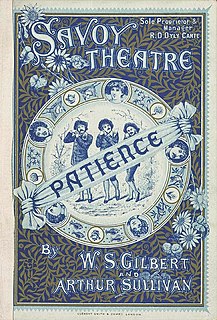
Patience; or, Bunthorne's Bride, is a comic opera in two acts with music by Arthur Sullivan and libretto by W. S. Gilbert. The opera is a satire on the aesthetic movement of the 1870s and '80s in England and, more broadly, on fads, superficiality, vanity, hypocrisy and pretentiousness; it also satirises romantic love, rural simplicity and military bluster.
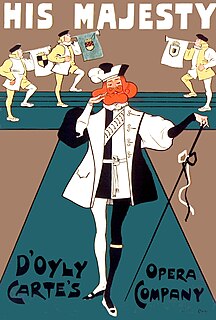
His Majesty, or, The Court of Vingolia is an English comic opera in two acts with dialogue by F. C. Burnand, lyrics by R. C. Lehmann, additional lyrics by Adrian Ross and music by Alexander Mackenzie.

Cox and Box; or, The Long-Lost Brothers, is a one-act comic opera with a libretto by F. C. Burnand and music by Arthur Sullivan, based on the 1847 farce Box and Cox by John Maddison Morton. It was Sullivan's first successful comic opera. The story concerns a landlord who lets a room to two lodgers, one who works at night and one who works during the day. When one of them has the day off, they meet each other in the room and tempers flare. Sullivan wrote this piece five years before his first opera with W. S. Gilbert, Thespis.
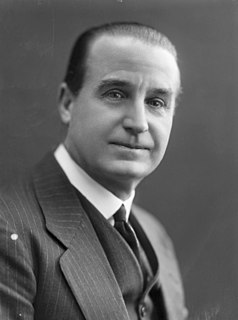
Sir Henry Lytton was an English actor and singer who was the leading exponent of the starring comic patter-baritone roles in Gilbert and Sullivan operas from 1909 to 1934. He also starred in musical comedies. His career with the D'Oyly Carte Opera Company spanned 50 years, and he is the only performer ever knighted for achievements in Gilbert and Sullivan roles.
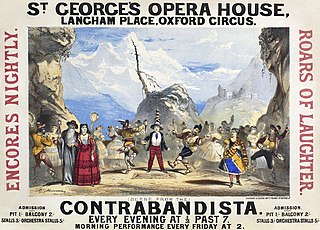
The Contrabandista, or The Law of the Ladrones, is a two-act comic opera by Arthur Sullivan and F. C. Burnand. It premiered at St. George's Hall, in London, on 18 December 1867 under the management of Thomas German Reed, for a run of 72 performances. There were brief revivals in Manchester in 1874 and America in 1880. In 1894, it was revised into a new opera, The Chieftain, with a completely different second act.

Richard Barker Cobb Temple was an English opera singer, actor and stage director, best known for his performances in the bass-baritone roles in the famous series of Gilbert and Sullivan comic operas.

Rosina Brandram was an English opera singer and actress primarily known for creating many of the contralto roles in the Savoy operas with the D'Oyly Carte Opera Company.

Charles Herbert Workman was a singer and actor best known as a successor to George Grossmith in the comic baritone roles in Gilbert and Sullivan operas. He was variously credited as Charles H. Workman, C. Herbert Workman and C. H. Workman.
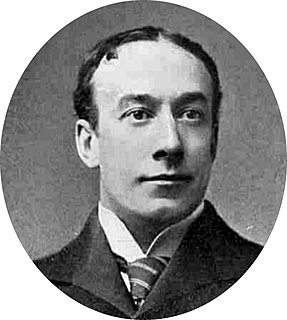
Walter Henry Passmore was an English singer and actor best known as the first successor to George Grossmith in the comic baritone roles in Gilbert and Sullivan operas with the D'Oyly Carte Opera Company.

Harry Henry Russell, better known as Scott Russell, was an English singer, actor and theatre manager best known for his performances in the tenor roles with the D'Oyly Carte Opera Company. He was the brother-in-law of D'Oyly Carte contralto Louie René.

Mirette is an opéra comique in three acts composed by André Messager, first produced at the Savoy Theatre, London, on 3 July 1894.
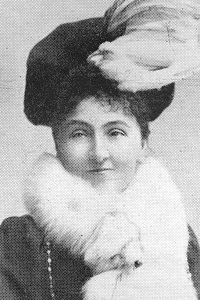
Louie Henri was an English singer and actress, best known for her many roles in the Savoy Operas with the D'Oyly Carte Opera Company. She married Henry Lytton, who eventually became the company's longstanding principal comedian.

Emily Owen was an English opera singer and actress, best known for her performances in soprano roles of the Savoy Operas with the D'Oyly Carte Opera Company. Beginning as a child actress, she performed for two decades before falling ill on tour and dying at age 33.
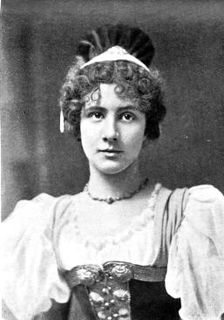
Florence Perry was an English opera singer and actress best known for her performances with the D'Oyly Carte Opera Company.
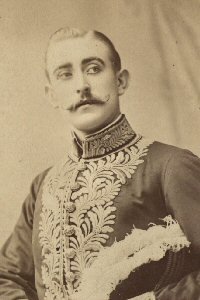
Robert Scott Fishe was an English operatic baritone and actor best remembered for creating roles in the 1890s with the D’Oyly Carte Opera Company.

Charles Kenningham was an English opera singer and actor best remembered for his roles in the 1890s with the D'Oyly Carte Opera Company.
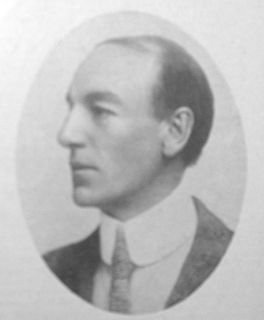
Hugh Enes Blackmore was a British opera and concert singer and actor. Known as the "Iron-Throated Tenor", he is best remembered for his performances of tenor roles with the D'Oyly Carte Opera Company. His career with D'Oyly Carte spanned almost 30 years, ending with a season as the company's stage manager, and was later a teacher of operatic singing and acting.

John Jones Hewson, credited as Jones Hewson, was a Welsh singer and actor known for his creation and portrayal of baritone roles with the D'Oyly Carte Opera Company from 1894 to 1901.
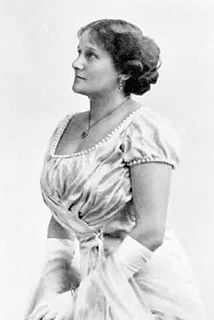
Louie René was an English singer and actress best remembered for her performances with the D'Oyly Carte Opera Company in the Gilbert and Sullivan contralto roles at the turn of the 20th century.

























